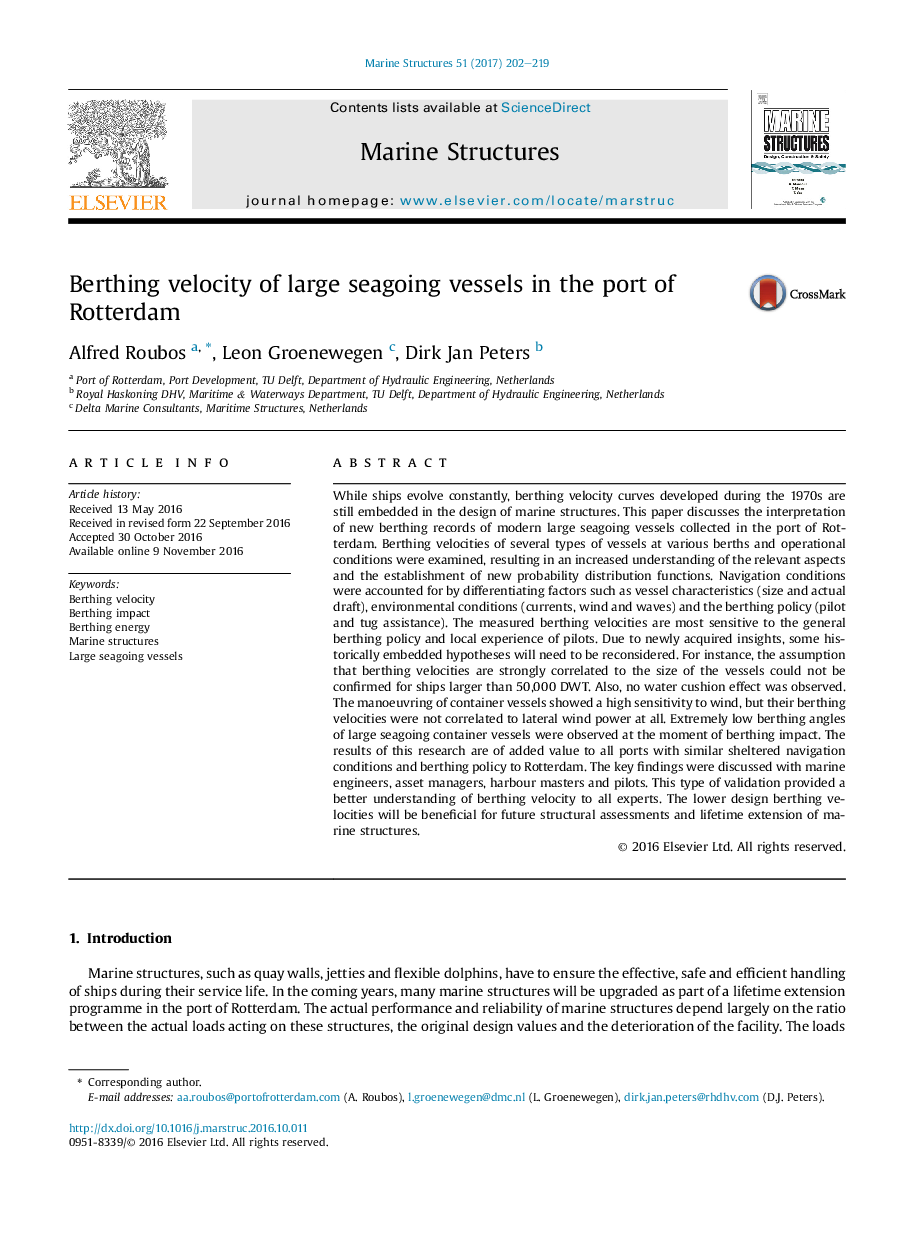| Article ID | Journal | Published Year | Pages | File Type |
|---|---|---|---|---|
| 4925088 | Marine Structures | 2017 | 18 Pages |
Abstract
While ships evolve constantly, berthing velocity curves developed during the 1970s are still embedded in the design of marine structures. This paper discusses the interpretation of new berthing records of modern large seagoing vessels collected in the port of Rotterdam. Berthing velocities of several types of vessels at various berths and operational conditions were examined, resulting in an increased understanding of the relevant aspects and the establishment of new probability distribution functions. Navigation conditions were accounted for by differentiating factors such as vessel characteristics (size and actual draft), environmental conditions (currents, wind and waves) and the berthing policy (pilot and tug assistance). The measured berthing velocities are most sensitive to the general berthing policy and local experience of pilots. Due to newly acquired insights, some historically embedded hypotheses will need to be reconsidered. For instance, the assumption that berthing velocities are strongly correlated to the size of the vessels could not be confirmed for ships larger than 50,000 DWT. Also, no water cushion effect was observed. The manoeuvring of container vessels showed a high sensitivity to wind, but their berthing velocities were not correlated to lateral wind power at all. Extremely low berthing angles of large seagoing container vessels were observed at the moment of berthing impact. The results of this research are of added value to all ports with similar sheltered navigation conditions and berthing policy to Rotterdam. The key findings were discussed with marine engineers, asset managers, harbour masters and pilots. This type of validation provided a better understanding of berthing velocity to all experts. The lower design berthing velocities will be beneficial for future structural assessments and lifetime extension of marine structures.
Keywords
Related Topics
Physical Sciences and Engineering
Engineering
Civil and Structural Engineering
Authors
Alfred Roubos, Leon Groenewegen, Dirk Jan Peters,
